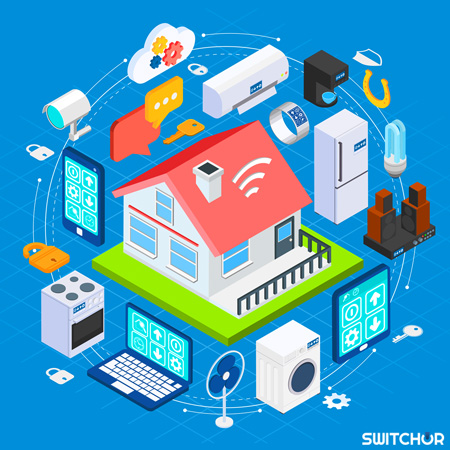Demystifying domotics
The word “domotics” comes from domus (Latin for home) and informatics, and is the rather highfalutin term for Home Automation. Domotics has been around for longer than you’d expect.
Simple beginnings
In the early part of last century, gas and electricity distribution paved the way for nascent labor-saving machines; water heaters, washing machines, and refrigerators. By the 70’s, the X10 protocol was established as a network technology to signal and switch appliances via electrical wiring. Thanks to domotics, we’ve far fewer time-consuming domestic chores to contend with in the modern era.
These days it’s a constantly shifting paradigm transcending protocol parameters with higher encryption, bandwidth, reliability, availability, and reduced cost. With each new innovation improving the comfort and security of the home occupants; light and climate control, control of doors, awnings, gates, blinds and window shutters, pool management and pet feeding, multimedia home entertainment systems, security and surveillance systems, connected appliances and robotic vacuums, automatic irrigation and plant watering, and automatic scenes for dinners and parties.
The fundamentals
The rudiments of domotics are the notions of comfort, safety, energy saving and communications, optimizing our quality of life by reinstating leisure time. A system can be broken down into six elements; hardware controllers, software hubs, mechanical sensors, data sources (often external sensor data), physical devices (i.e. actuators), and software services (e.g. Google Calendar). A simple primitive system could comprise a single mechanical sensor, a hardware controller, and an actuator (for example, a motorized garage door triggered to open and close by remote).
In recent years, the proliferation of affordable smart home sensors and devices has left many of us craving increasingly sophisticated systems, interweaving multiple sensors, and recognising individual household occupants whilst self-learning from observed behaviour patterns.
Pink elephants
In fact, today we expect our automation investments to integrate seamlessly with our lives, but switching from analogue to automatic can actually necessitate compromise (as many early adopters will no doubt attest). Widely recognized imperfections are apparent with all emergent technology, making it all the more challenging to convince domotics sceptics of the benefits.

And they’ve good reason to be cautious, because there is a high likelihood of feeling underwhelmed with your latest acquisition, especially when you encounter the often complete disregard your new device has for the ecosystem that yearns to embrace it.
As the feeling of astonishment of this new wizardry of otherworldly proportions subsides, many are left nursing their domotics hangover. Having been drawn into a manic frenzy of automation lust, inhibitions cast away as we’re spellbound by the blinking lights, charmingly subservient digital assistants, and products with empyreal radiance and aesthetic. We are left pondering “what happened” with a realization that not all was what it seemed yesterday.
So those quintessential principles … comfort, safety, energy saving and communications … what happened?
Take Switchur for symptomatic relief of domotic hangovers
Without unification a smart home is reminiscent of a zoo of exotic species confined to their respective enclosures, obsessed by a feeding schedule that uncoincidentally adheres to peak visitor times, whilst they are dolefully unaware of their provenance and true purpose. That the smart home should instead be analogous to an orchestral concerto is too often overlooked, and unlikely to seed exuberant cooperation amongst manufacturers anytime soon. Until then, there are some options for those of us with symphonist tendencies.
Orchestrating your smart home to work in harmony is achievable with Switchur. Create your account today!


